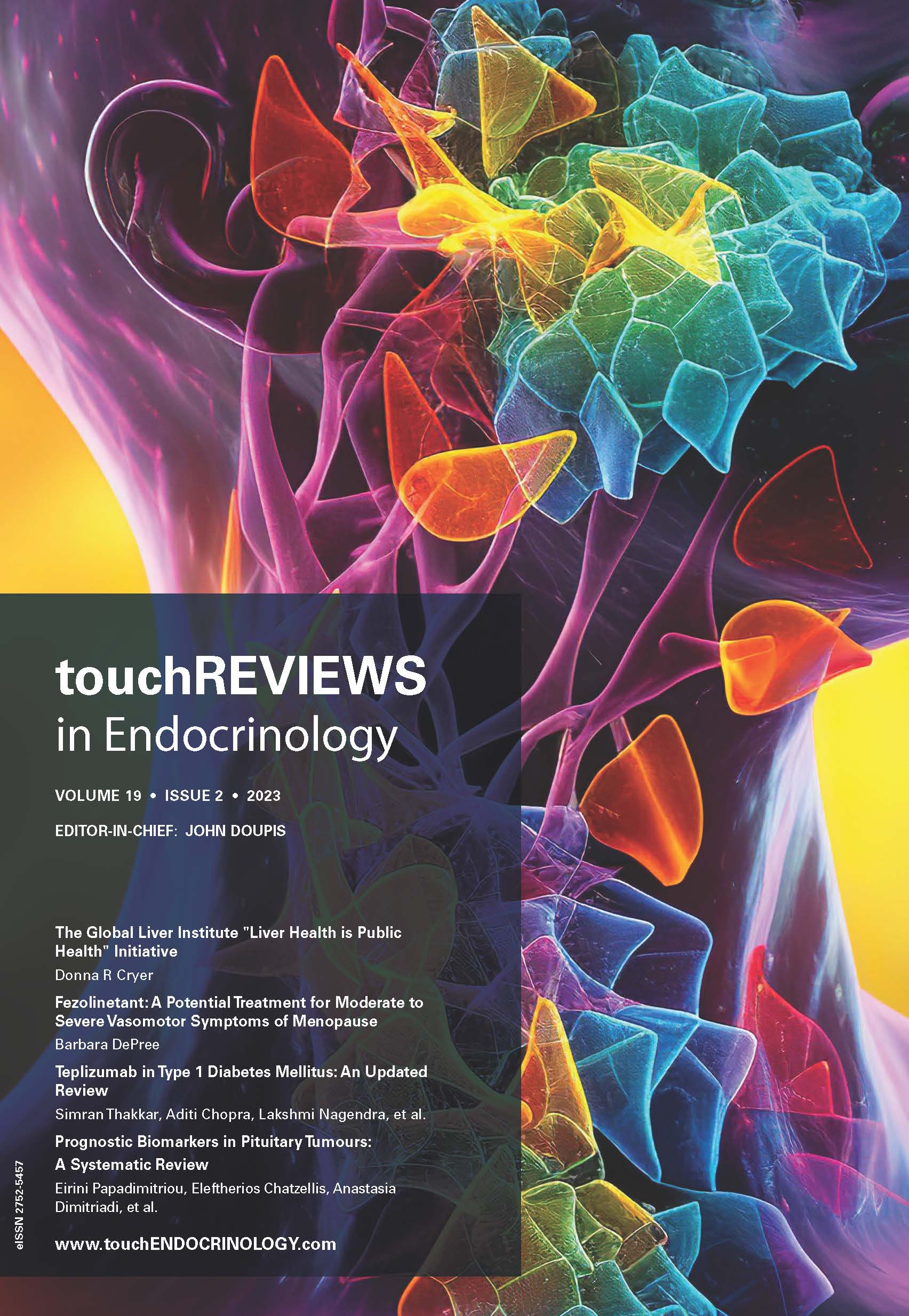EUROPEAN ENDOCRINOLOGY – VOLUME 7 ISSUE 1 – SUMMER 2011
Foreword
Here we are, at the turn of the century, and randomised trials have shown that most of what we knew about sex steroids was simply wrong. We were actually causing cardiovascular disease with hormone therapy. Recently, our understanding has changed once again, after the Women’s Health Initiative investigators’ recent publication showing that postmenopausal women who […]
Editor
There are three gonadotrophic hormones: follicle-stimulating hormone (FSH) and luteinising hormone (LH), produced by the anterior pituitary gland, and human chorionic gonadotrophin (hCG), produced by placental trophoblasts. Besides stimulating gonadal steroidogenesis and gametogenesis, these hormones have stimulatory effects on the proliferation of their target cells. Therefore, it is feasible that gonadotrophins could participate in the […]
Diabetes Pathophysiology
Over the past 50 years, average sleep duration in Western societies has decreased by two hours per night.1 Initially, this decrease in sleep was observed mainly in adulthood, but recent epidemiological studies have shown a similar decrease in children and adolescents.2,3 A decrease in sleep includes not only the duration, but also the quality of […]
Diabetes Prevention
It is now well known that the prevalence of diabetes has increased over the last few decades and is predicted to continue to increase. This is not just due to the ageing of populations.1,2 In comparison with 2010, by 2030 it is predicted there will be a 20% increase in the number of diabetic patients […]
Diabetes Management
Many patients with type 2 diabetes require insulin therapy during the course of their disease, either as monotherapy or as an addition to existing oral glucose-lowering therapy.1–3 However, this might not always be sufficient to maintain adequate glycaemic control and additional therapies might therefore be required.1–3 The oral glucoselowering drug pioglitazone is one of several […]
Sodium–Glucose Co-transporter 2 Inhibition – A Novel Strategy for Glucose Control in Type 2 Diabetes
Individuals with type 2 diabetes suffer from increased morbidity and mortality secondary to both macrovascular (heart attack, stroke and amputation)1 and microvascular (retinopathy, nephropathy and neuropathy)2 complications. Hyperglycaemia is the major risk factor for microvascular complications. Many studies, e.g. the Diabetes Control and Complications Trial (DCCT)3 and the UK Prospective Diabetes Study (UKPDS),4 have documented […]
Cardiovascular Risk
Hypertension and Diabetes The Size of the Problem
Pituitary Disorders
Pediatric endocrinologists aspire to provide the best care for children including improving outcomes in growth hormone deficiency (GHD). The challenging issues are sometimes simple ones, such as which children should be seen in the endocrine clinic for evaluation of their growth, or standards for diagnosis of GHD, or methods of delivering standard therapy for GHD.1 […]
Adrenal Disorders
The ability of an organism to respond to stressful stimuli is fundamentally important to that organism’s continuing survival. Recognition of a stressor elicits a range of physiological changes that enable the organism to cope and to facilitate the restoration of homeostasis. Many of these physiological changes are mediated via activation of the hypothalamo–pituitary–adrenocortical (HPA) axis […]
Thyroid Disorders
Subclinical hypothyroidism comprises elevated serum thyroidstimulating hormone (TSH) in the context of normal peripheral thyroid hormone concentrations.1 Although this definition is highly dependant on methods for TSH measurement and the definition of the upper limit of normal reference values, many publications have come out in recent years concerning the long-term consequences of subclinical hypothyroidism and […]
Neuroendocrine Tumours
Since the description of Turner syndrome (TS) in 1938, a wealth of information has been added and our current understanding of the syndrome is continuously being broadened. The syndrome affects only females and care must include the close collaboration of several specialties such as genetics, embryology, paediatrics, gynaecology and obstetrics, endocrinology, cardiology, gastroenterology, otorhinonology and […]

Trending Topic
We are pleased to present the latest issue of touchREVIEWS in Endocrinology, which offers a timely and thoughtprovoking collection of articles that reflect both the continuity and evolution of diabetes and metabolic disease research. In an era where technology, public health priorities and clinical paradigms are shifting rapidly, this issue highlights the importance of evidence-based […]
Journal Archive
touchREVIEWS in Endocrinology (previously European Endocrinology) is a peer-reviewed, free-to-access, bi-annual journal comprising review articles, case reports, editorials, special reports and original research. It features balanced and comprehensive articles written by leading authorities, addressing the most important and salient developments in the field of endocrinology.
Latest articles videos and clinical updates - straight to your inbox
Log into your Touch Account
Earn and track your CME credits on the go, save articles for later, and follow the latest congress coverage.
Register now for FREE Access
Register for free to hear about the latest expert-led education, peer-reviewed articles, conference highlights, and innovative CME activities.
Sign up with an Email
Or use a Social Account.
This Functionality is for
Members Only
Explore the latest in medical education and stay current in your field. Create a free account to track your learning.






